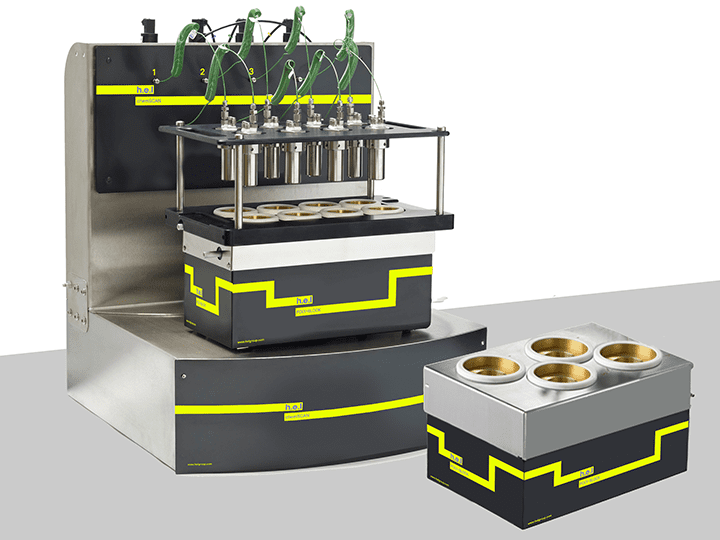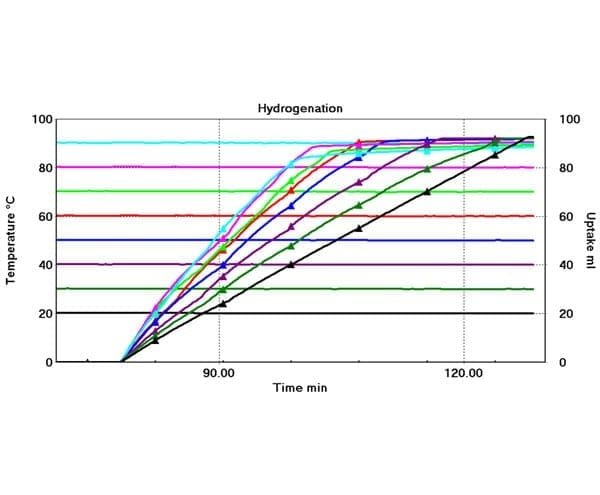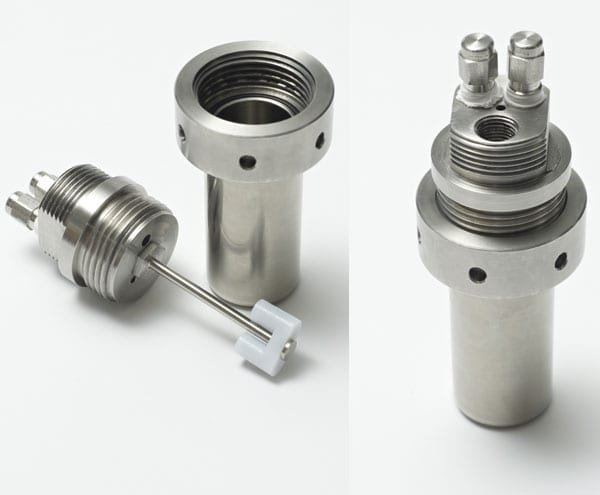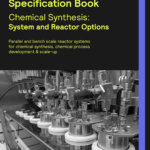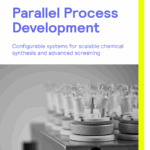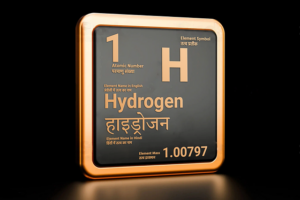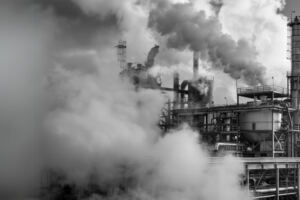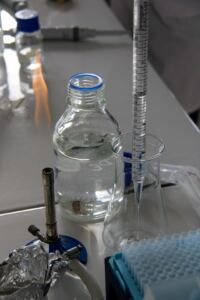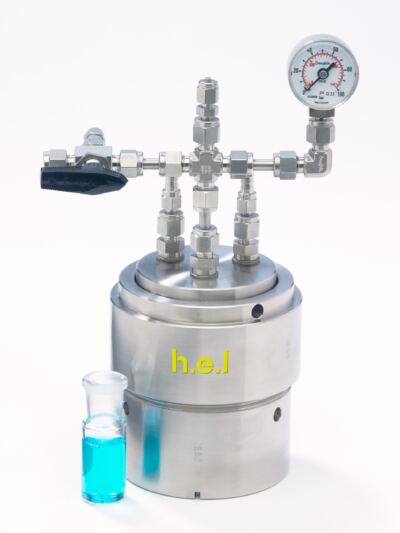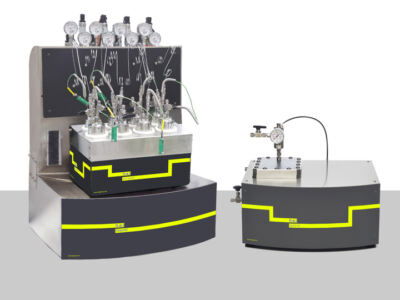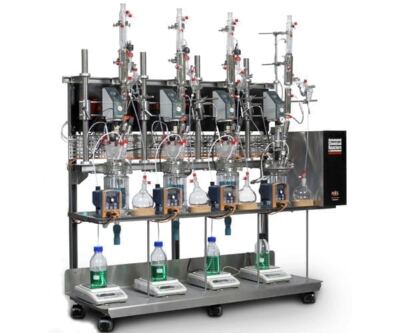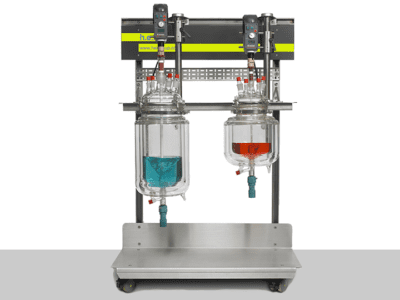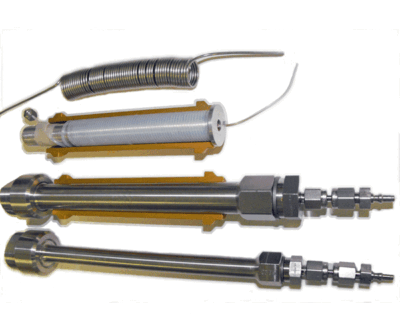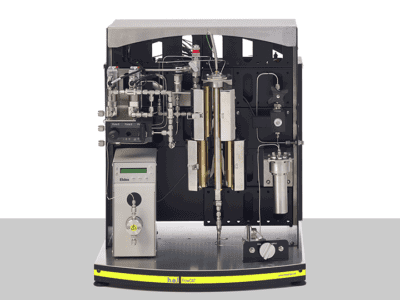ChemSCAN | Parallel Catalyst Screening and Development Platform
ChemSCAN brings efficiency and flexibility to catalytic research by enabling up to 8 high-pressure reaction zones to run in parallel — each with fully independent control.
Designed to boost productivity, it allows multiple experiments under different conditions in a single, streamlined run.
Overview
Whether optimizing hydrogenations or investigating carbonylation reactions, ChemSCAN provides the robust performance and reliable control needed to explore variables like temperature, pressure, and different solvents with confidence.
- Ideal for hydrogenation, carbonylation, polymerization, and gas-liquid reaction.
- Assess key variables like gas uptake, pressure, and temperature in real time
- Compact, flexible, and built to accelerate decision-making and streamline development
Technical Literature
The following is a list of supporting Technical Literature.
Identifying the best rhodium-modified catalyst and the best reaction conditions with ChemSCAN for the synthesis of aroma compounds
Investigating Hydrogenations at Different Catalyst Loadings using the ChemSCAN
Publications
The following are a list of some technical publications which highlight the use of the equipment.
First Total Synthesis and Structural Confirmation of C13-Butylrubber Oligomers
Fabrizio Minicone Robin Attrill Michael Hodgson Katherine Wheelhouse Adrian Dobbs
01-May-2018
https://doi.org/10.1002/ejoc.201800496(Subscription or purchase maybe required for full access)
Production of Biomass-Based Automotive Lubricants by Reductive Etherification
Jadhav, Deepak Grippo, Adam M Shylesh, Sankaranarayanapillai Gokhale, Amit A Redshaw, John Bell, Alexis T
01-Apr-2017
https://doi.org/10.1002/cssc.201700427(Subscription or purchase maybe required for full access)
Quantitative Differences in Sulfur Poisoning Phenomena over Ruthenium and Palladium: An Attempt To Deconvolute Geometric and Electronic Poisoning Effects Using Model Catalysts
Amy Kolpin,† Glenn Jones,‡ Simon Jones,† Weiran Zheng,† James Cookson,‡ Andrew P. E. York,‡ Paul J. Collier,‡ and Shik Chi Edman Tsang*
01-Dec-2016
https://doi.org/10.1021/acscatal.6b02765(Subscription or purchase maybe required for full access)
Kinetics of hydrogenation and hydrogenolysis of 2,5-dimethylfuran over noble metals catalysts under mild conditions
Ying Lin Louie, Joseph Tang, Alexander M.L. Hell, Alexis T. Bell
01-Sep-2016
https://doi.org/10.1016/j.apcatb.2016.09.046(Subscription or purchase maybe required for full access)
Interstitial modification of palladium nanoparticles with boron atoms as a green catalyst for selective hydrogenation
Chun Wong Aaron Chan, Abdul Hanif Mahadi, Molly Meng-Jung Li, Elena Cristina Corbos, Chiu Tang, Glenn Jones, Winson Chun Hsin Kuo, James Cookson, Christopher Michael Brown, Peter Trenton Bishop & Shik Chi Edman Tsang
01-Dec-2014
https://doi.org/10.1038/ncomms6787(Subscription or purchase maybe required for full access)
Tuning the properties of PdAu bimetallic nanocatalysts for selective hydrogenation reactions
Elena C. Corbos*a, Peter R. Ellisa, James Cooksona, Valérie Brioisb, Timothy I. Hydea, Gopinathan Sankarc and Peter T. Bishop
01-May-2013
https://doi.org/10.1039/C3CY00255A(Subscription or purchase maybe required for full access)
Haloaurate and halopalladate imidazolium salts: structures, properties, and use as precursors for catalytic metal nanoparticles
Christopher J. Serpell‡ a, James Cookson b, Amber L. Thompson a, Christopher M. Brown b and Paul D. Beer
01-Nov-2012
https://doi.org/10.1039/C2DT31984E(Subscription or purchase maybe required for full access)
Etherification and reductive etherification of 5-(hydroxymethyl)furfural: 5-(alkoxymethyl)furfurals and 2,5-bis(alkoxymethyl)furans as potential bio-diesel candidates
Madhesan Balakrishnan, Eric R. Sacia and Alexis T. Bell
01-Mar-2012
https://doi.org/10.1039/C2GC35102A(Subscription or purchase maybe required for full access)
Development of Scaffold Synthesis for the Preparation of New Insulin-Like Growth Factor 1 Receptor Inhibitors
Ilaria Candiani, Germano D’Arasmo,* Franco Heidempergher, and Attilio Tomasi
01-Jan-2009
https://doi.org/10.1021/op8002536(Subscription or purchase maybe required for full access)
Downloads
The following are a list of available downloads.

We are happy to confirm that H.E.L has supplied us with two high pressure reactor systems with automation. These systems are used for the screening of catalysts and/or different reaction conditions in hydrogenation and hydroformylation reactions. We have been using one device with eight autoclaves during the last 8 years or so, and we are very satisfied with it. The handling and programming is quite easy. The graphical evaluation of data allows us to get an overview about the process in each autoclave. The cooperation and service provided by the employees by phone or e-mail is plain sailing. It is for this reason that we bought a second HP ChemScan with four autoclaves in 2010 which was upgraded recently to an eight-autoclaves-device. It allows a larger variation of parameters and also the graphical evaluation of the results has been further improved.

This apparatus has many advantages. You have a good control of the temperature and pressure and you can follow the gas uptake on the monitor with good accuracy. The software is easy to use, with all commands for one run resumed in one program. The interface of the software is pleasant looking with a good view of all parameters. The reaction can be followed via the graphics, with the possibility of changing the scale of the graphs at any time. Reactors can be easily placed and removed. Handling the reaction mixtures before and after the reaction is quite simple.
University Joseph Fourier - France
Industries and Applications
Hydrogen economy for industrial and energy applications
Development of catalytic processes for hydrogen production from fossil fuels
Industrial paints, alcohols / Oxo-Process -Aldehyde synthesis
Perform oxo Process, hydroformylation, and carbonylation of Aldehydes.
Syngas & CO-Based Catalysis
Investegate reactions involving CO, CO₂, syngas, and mixed gas feeds under regulated pressure for carbonylation,…
Pharma, Fine Chemicals, Food/Cooling Crystallization
Control cooling profiles to optimise nucleation and growth, achieving desired crystal size and purity.
Production of liquid medication into tablet form
Research into solubility of liquids to determine the temperature range over which suitable tablets can…
Separation of chemicals
Crystallization of selected chemicals in order to separate them (by filtration) from other more soluble…
Seeded Crystallization
Use seed crystals to control growth kinetics and reduce batch variability for consistent product quality.

